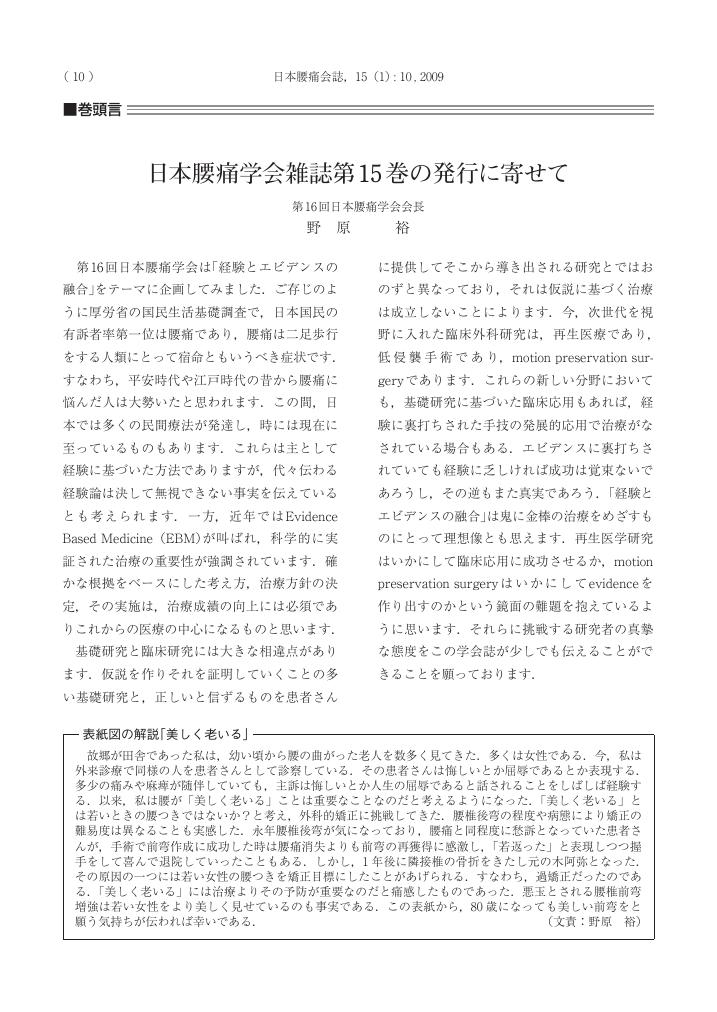2 0 0 0 OA 日本腰痛学会雑誌第15巻の発行に寄せて
- 著者
- 野原 裕
- 出版者
- 日本腰痛学会
- 雑誌
- 日本腰痛学会雑誌 (ISSN:13459074)
- 巻号頁・発行日
- vol.15, no.1, pp.10, 2009 (Released:2009-12-19)
1 0 0 0 健常人は利き腕と非利き腕を同じパターンで挙上 • 下垂するか?
- 著者
- 矢野 雄一郎 玉井 和哉 野原 裕 吉崎 邦夫 浜田 純一郎
- 出版者
- 日本肩関節学会
- 雑誌
- 肩関節 (ISSN:09104461)
- 巻号頁・発行日
- vol.32, no.2, pp.241-244, 2008 (Released:2008-08-30)
- 参考文献数
- 6
- 被引用文献数
- 1
To clear whether healthy subjects elevate and lowered their dominant and non dominant shoulder joints in the same manner or not was significantly valuable to understand the pathology of shoulder diseases: rotator cuff tear; impingement syndrome; stiff shoulder; and loose shoulder. 20 young healthy participants (17 males and 3 females, average age 22.6 years old) participated in this study. They randomly elevated and lowered both shoulder joints in the scapular plane at three times and were recorded by 3 dimensional motion analyzer. We calculated the scapulohumeral rhythm in each 10° and analyzed the setting phase. There was statistically no significant difference in the scapulohumeral rhythm between the dominant and non dominant shoulders. Scapulohumeral rhythm was stable (3.5) from 60° in elevation to 50° in lowering, however, individual variation of scapulohumeral rhythm (more than 3.5) was identified except the previous shown angles. To elevate both shoulder joints in the same manner mean that we can compare both shoulders about the scapula motion and arm elevation in patients with shoulder disorders. The setting phase is defined as until 60° in elevation, and moreover, a similar phase as the setting phase with various scapular motion is recognized in the lowering motion.
